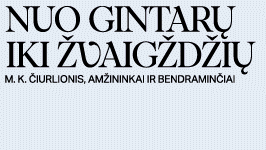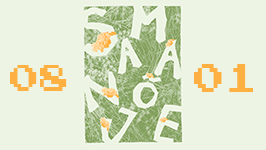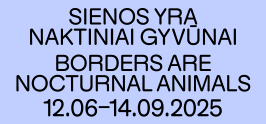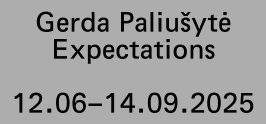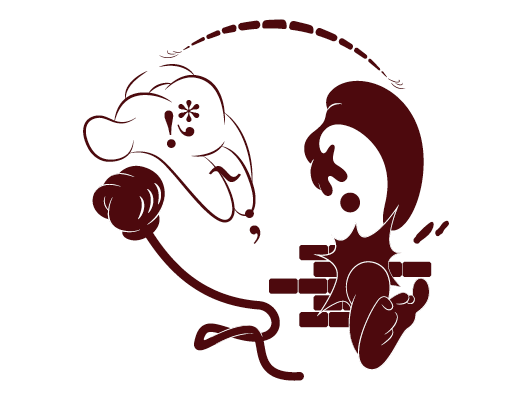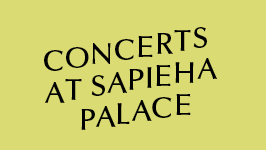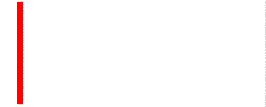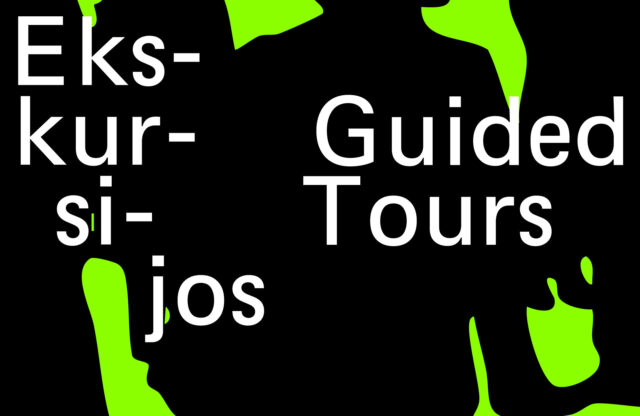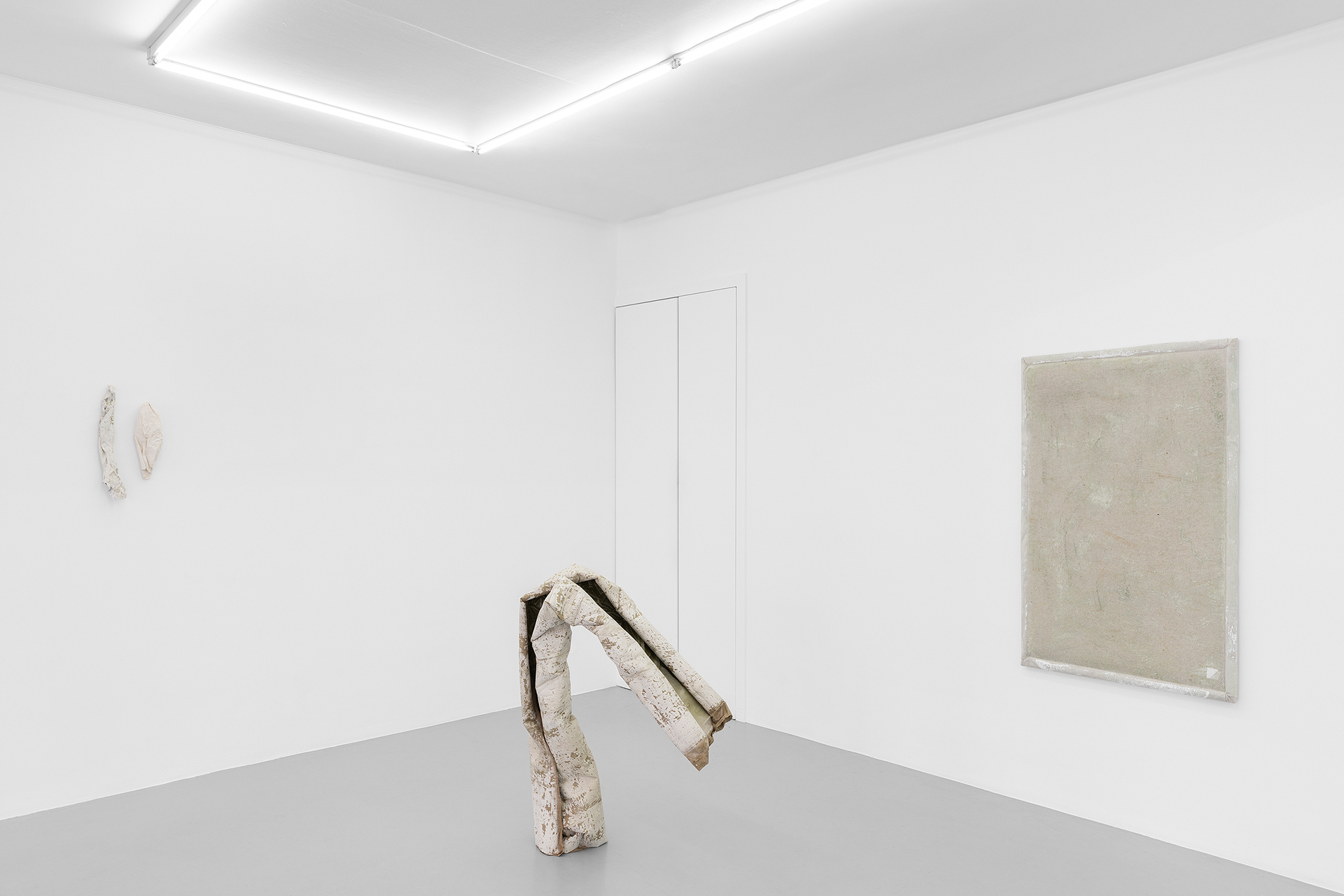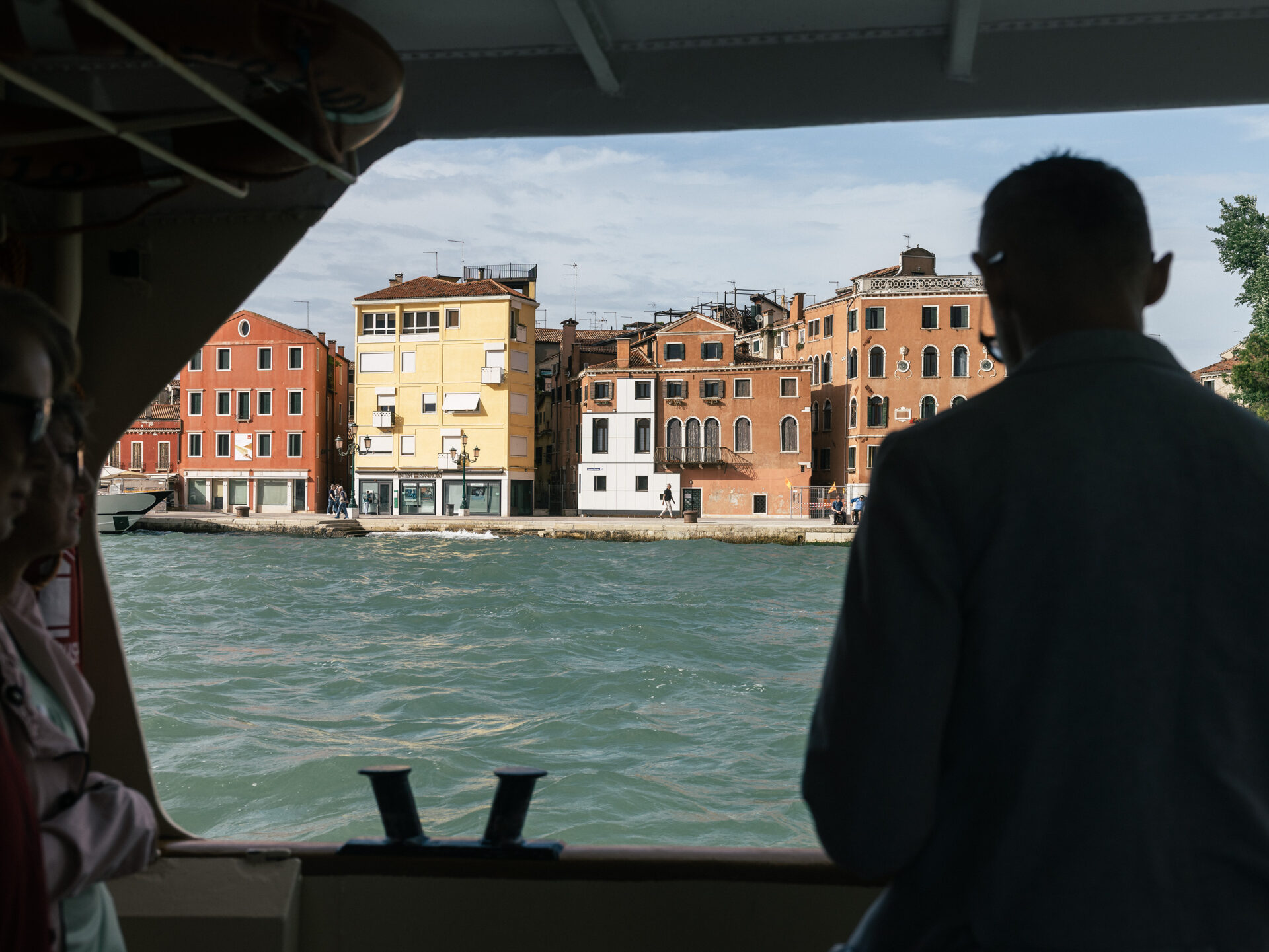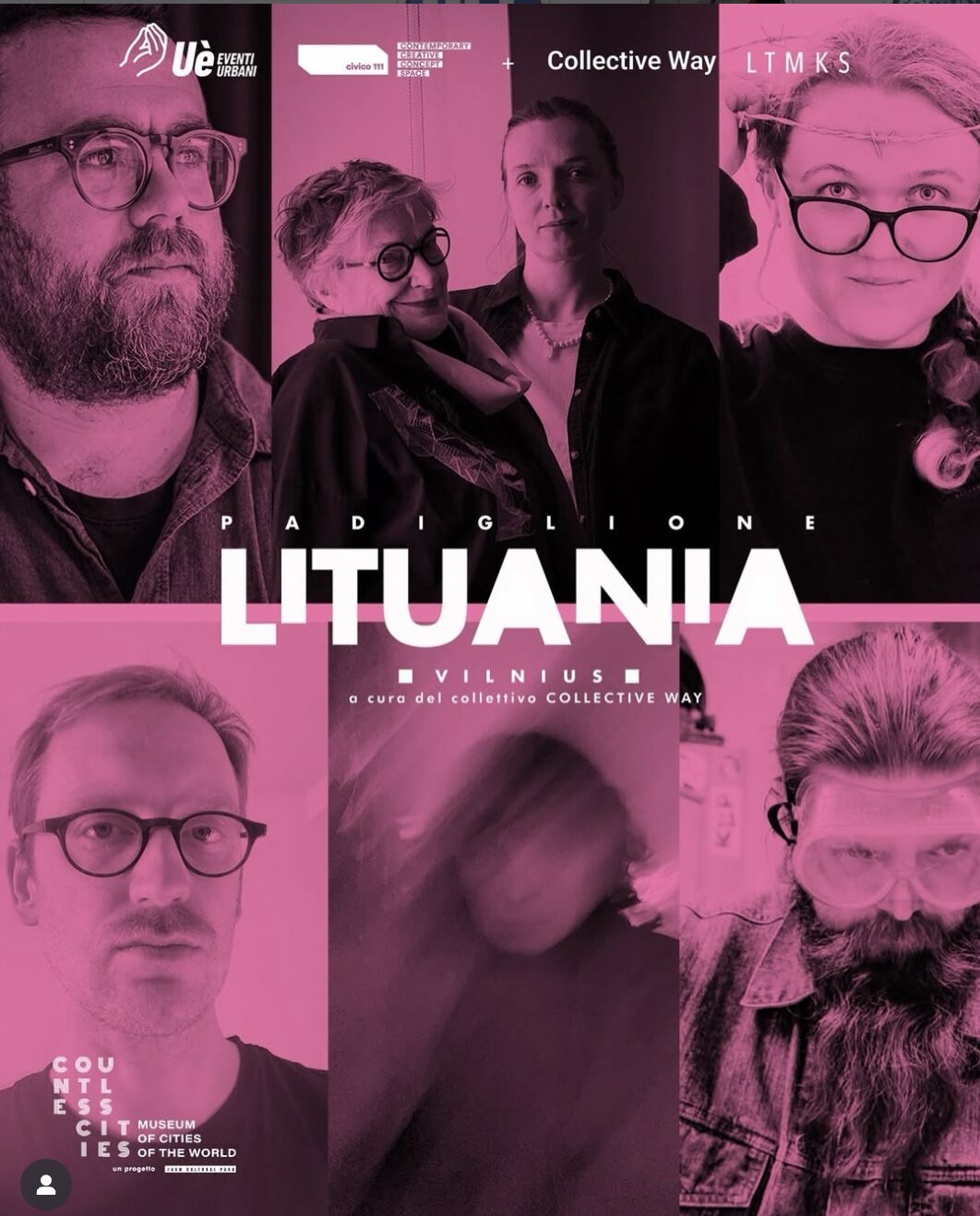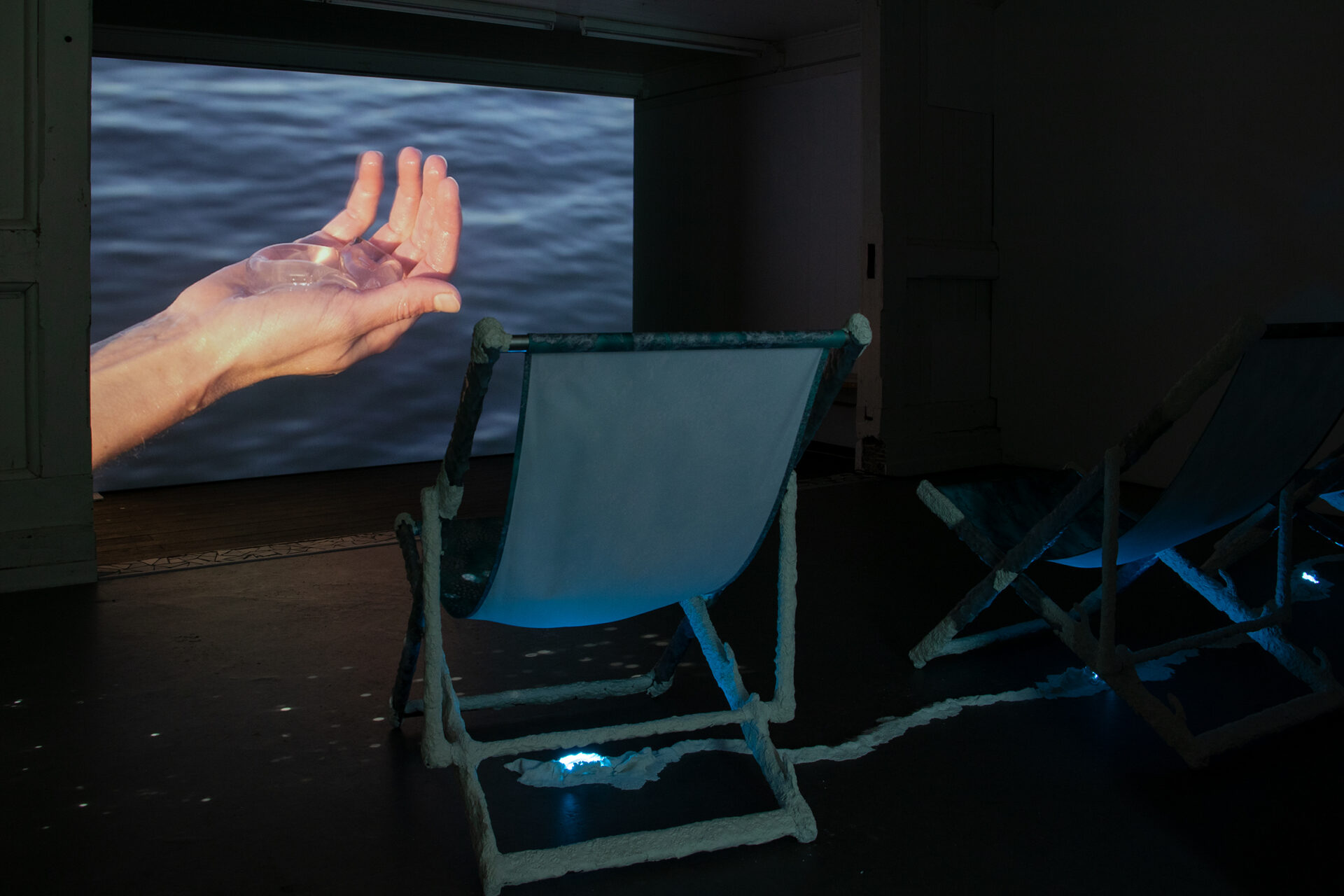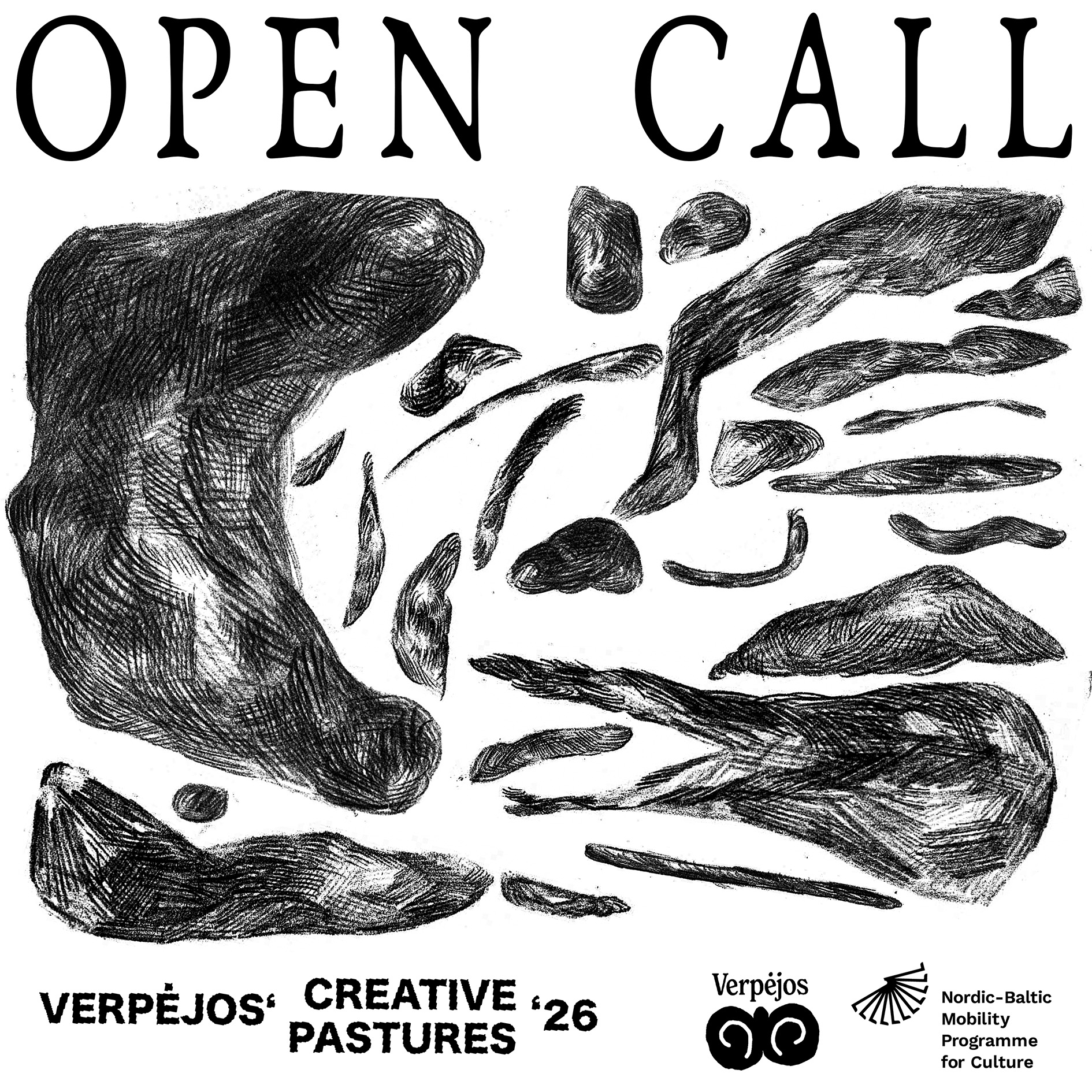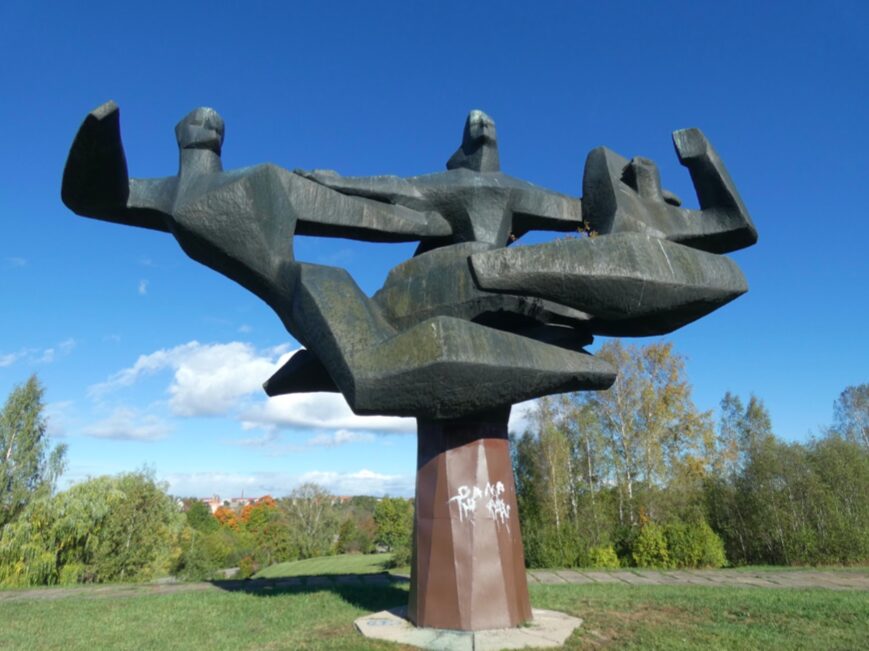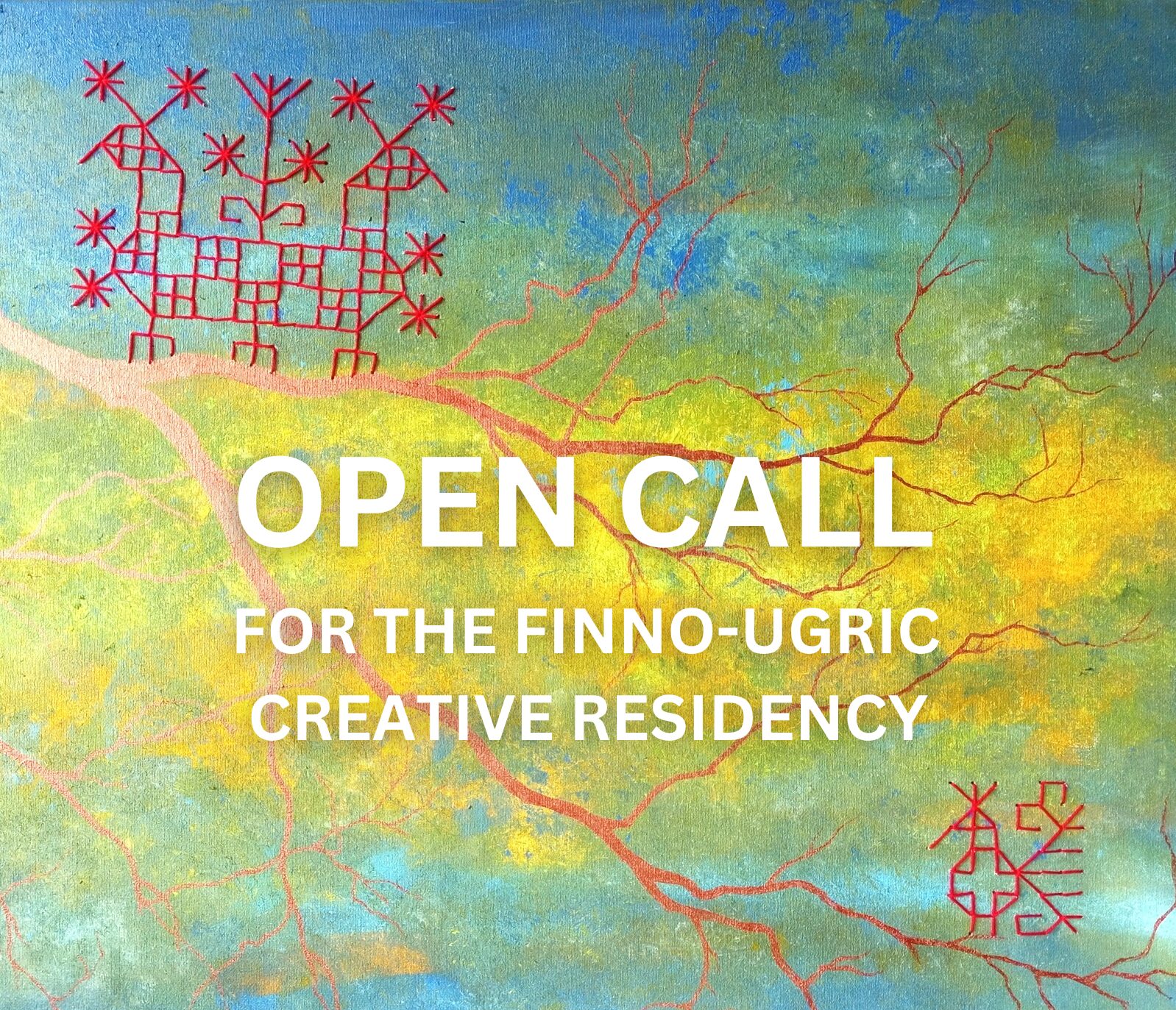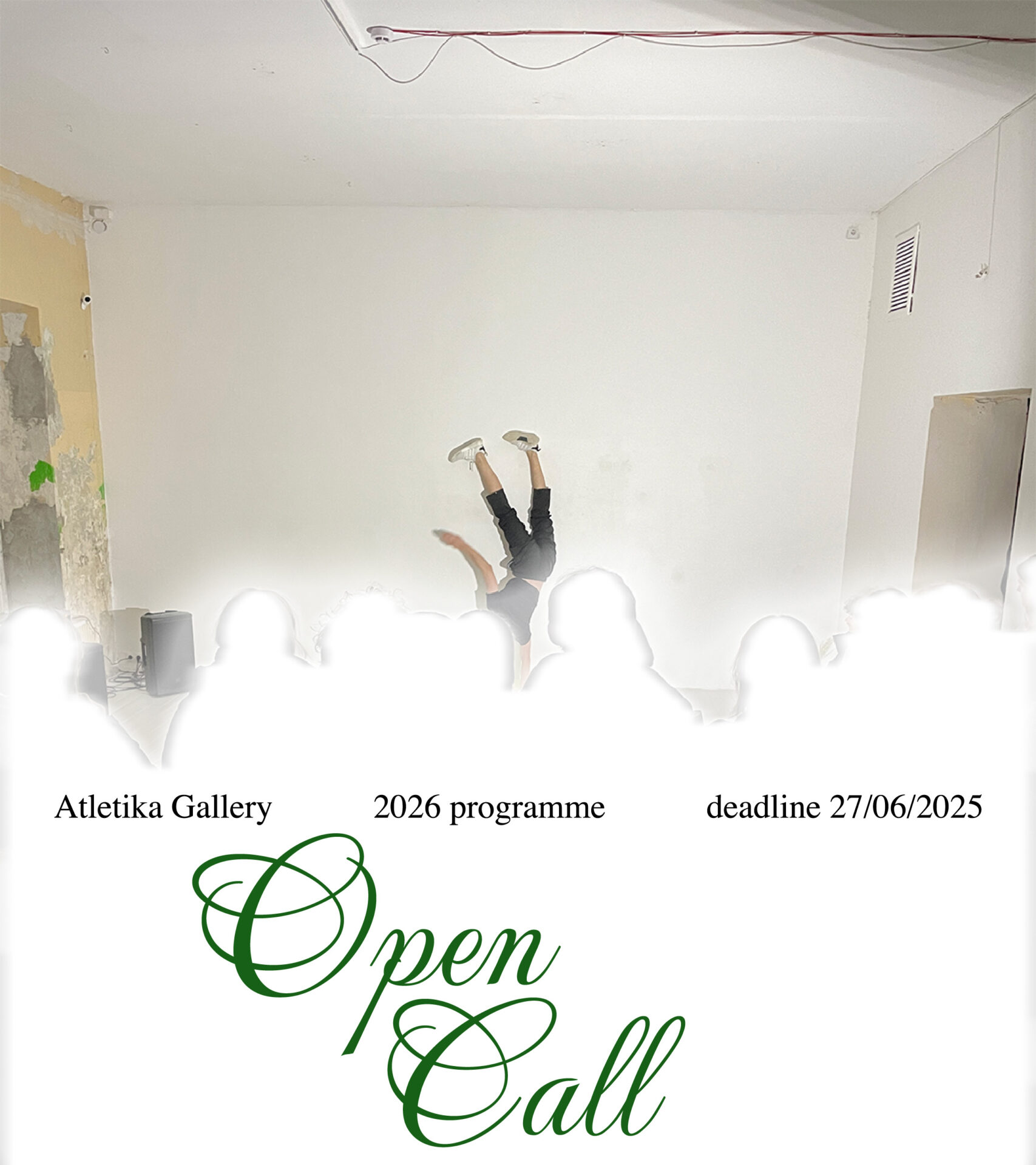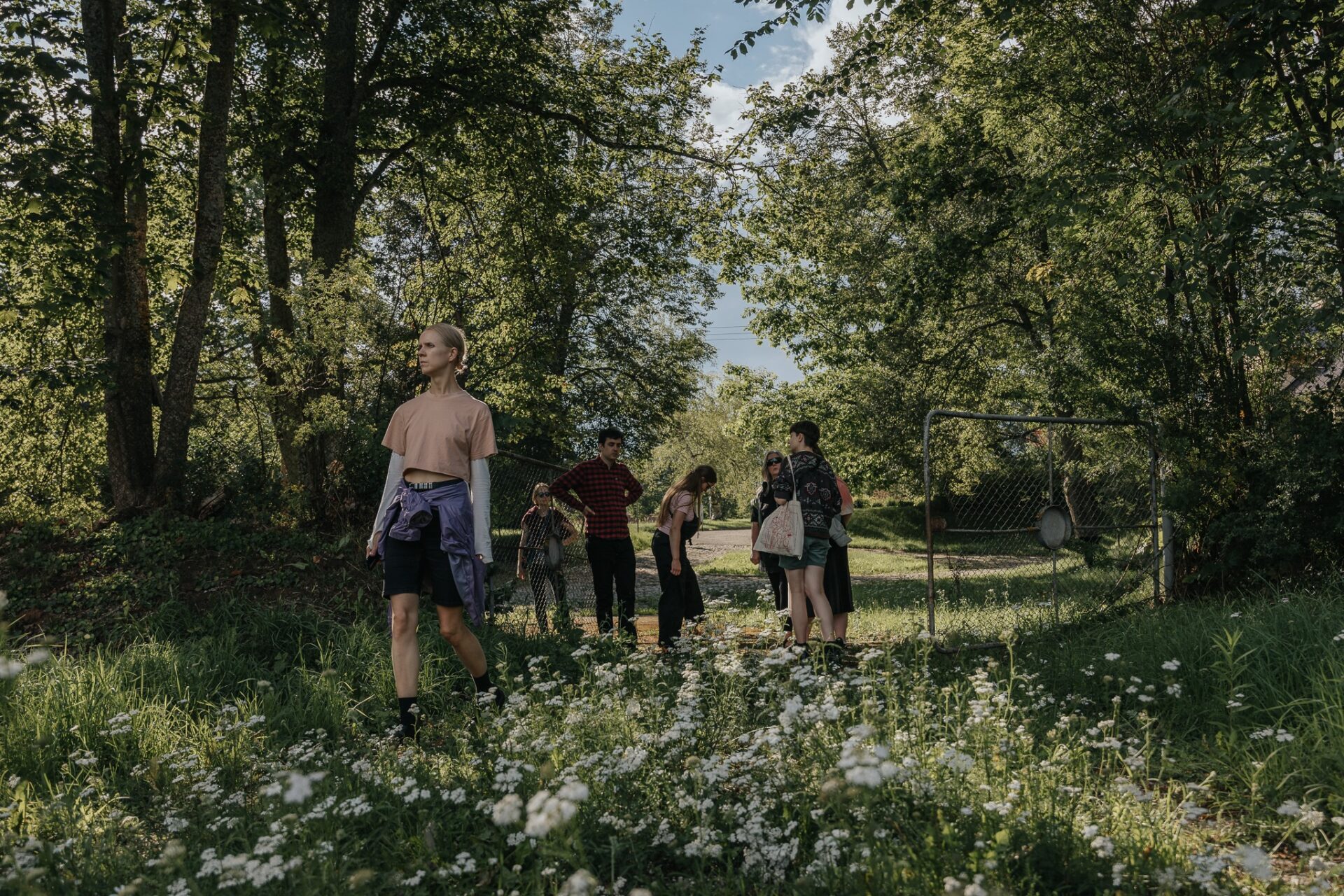Kaunas International Film Festival “Videograms”, which took place in the city of Kaunas from the 17th to the 27th of September, considered how images have the ability to penetrate different artistic, cultural, social, economic, ecological and political fields, among others, from a variety of different viewpoints. Due to a continuously expansive and multidirectional stream of visual content, our own worldview becomes like a flow of fragmented images, while the consciousness itself starts resembling an imagination-like medium. Contemporary society – to which this excessively saturated, immersive and dream-like state of mind is a normal background for its own identity or being – simply cannot imagine itself without the multilayered existence it carries out within the screen.
We spoke with the festival’s curators Monika Lipšic, Viktorija Šiaulytė and Milda Januševičiūtė about the possibilities of video as a medium to create history and formulate thinking patterns within political contexts, and talked about the notions of health and wellbeing.
Evelina Januškaitė: This year, Kaunas International Film Festival has been comprised of separate yet tightly connected parts: various curated film screenings, video art exhibitions, discussions and tours with the artists, while later on the festival moved into the digital space as well. The selected films cover a very wide range of topics: motherhood, social equality and its limits, indigenous cultures and identity, to the impact of technology and media on the viewer’s mind; the tension between normality and marginalisation, health and healthcare systems, ecological problems or fundamental reconsideration of the concept of time. All of that contributes to the great existential narrative we are constantly creating and wherein we live. Please could you tell us a bit more about how all of these parts are interconnected and the content of the festival?
Viktorija Šiaulytė: Typologically speaking, the festival is comprised of four parts. Our feature length film programme has been an indirect reaction to the situation and extraordinary events of the last year. Certain films attempt to reconsider how our personal health is linked to the collective –Kazuhiro Soda’s “Seishin 0”, Phil Collins’ “Tomorrow Is Always Too Long”, Lotta Petronella’s “Själö, Island of Souls”, Ingo Niermann and Alexa Karolinski’s “Ocean of Love”, amongst others – which is what we all had to brood over throughout the pandemic. It became obvious that the health and wellbeing of every one of us depended on how we treated each other, how we took care of one another. The films selected for this programme talk about the forms and structures of care, about the wellbeing activities or practices, interpersonal connections, empathy, the relation between humans and nature. The films focus on these connections which are shown as complicated and problematic requiring a closer look into their diversity, complexity and depth. This in particular is addressed in the film “Expedition Content” (2020) by Veronika Kusumaryati and Ernst Karel, artists and scientists at the Harvard University Sensory Ethnography Lab. This exceptional film talks about an inextricable link between anthropological researchers and their subjects – both of which are humans – through a dialogue between an ethnographical sound archive and contemporary montage. Apart from this film programme, the festival introduces many theme-curated programmes, two exhibitions and the screening-discussion series “Videogram Days”.

Lotta Petronella, Själö, Island of Souls, 2020. Film still
EJ: You’ve mentioned that the festival’s content has undoubtedly been affected by the pandemic, which has flooded us with feelings of insecurity, isolation, vigilance and anxiety. What impact and implication has all that had on the festival’s organisation? How has it affected the festival’s format?
VŠ: Certainly the festival has been affected just like all other cultural events. However, we tried looking at it constructively and creatively. That’s how the topic of health came about. However, instead of showing films on viruses, the history of pandemics or some other global disasters, we chose to create space for contemplative thought, for a possibility to step back and take a look at the state currently common to all of us – despite a plenitude of issues, even corporate advertising slogans have started to include certain words like “solidarity” and “care”. So the film programme was designed to showcase this potential of overstepping individualism. “The Ocean of Love” is an interesting and rather radical project about the so-called “Love army”, a speculative organisation, which somehow unifies people of different sexes, nationalities, orientations and social classes. The organisation invites everyone to trust that love isn’t solely a romantic, uncontrolled impulse, but also a political choice. We ourselves attempted to keep the festival live for as long as possible, since we had been deeply yearning for collective film watching and for the physical presence of others.
EJ: But then towards the end of the festival a big part of it was moved online. Has such a format existed before? Or has this been affected only by the recent processes of the digitalisation of culture?
VŠ: This was new for us. However, we’d been trying to find such a hybrid model for a long time both in carrying out the film events in real time and in expanding its limits through other platforms.
Monika Lipšic: This year after the festival, all of the films were still available until the 11th of October on platform www.kinoforndas.lt.
EJ: In visual arts, content digitalisation suggests a rather reduced version of an artwork’s true form, or it highlights a supposedly objective viewpoint towards that work, which is formed by the person capturing the image, and so the true possibility of experiencing that artwork is completely taken away from the viewer. With cinema it’s a different story. Cinema is a medium which, generally speaking, keeps the distance as it is always experienced through a screen. However, physical location (say, a cinema hall) or another place for public screening creates additional dimensions of experiencing the film. How does the transferring of films into digital space (when the reach is increased, yet certain aspects of the experiencing itself are suspended) steer the evolution of such festivals as yours?
Milda Januševičiūtė: For a film festival content digitalisation isn’t that painful. Our festival was scheduled a bit later in time than, say, festival “Kino Pavasaris”, which had to be completely restructured due to the quarantine – therefore, we had time to stay flexible in terms of the festival’s form. This flexibility opened access to our films for those who otherwise wouldn’t have been able to come to the cinema theatres. That on its own shows a positive step towards reducing social exclusion of certain audiences.
EJ: The title “Videograms” has been borrowed from German director Harun Farocki’s (1944–2014) documentary “Videograms of Revolution” (1992), however, you’ve also coined another term video-imaginations. What does this concept mean to you? How does it differ from other phenomena that expand visual consciousness? What do you mean by this video-imagination’s processuality ?
ML: It all started intuitively as we were forming the artists’ film programme and looking for parallels between the technological development of moving image and imagination. The term, video-imaginations, was born as we were trying to describe the artists’ films. How created images reflect on our imagination and how they impact its very formation were the questions we considering. Video images and imagination are interacting directly. The images we create give ground to how we later make use of them, and here we face a speculative question: are our dreams also videos? Indeed, they are moving images, while the visual memory unfurls like a never-ending movie.
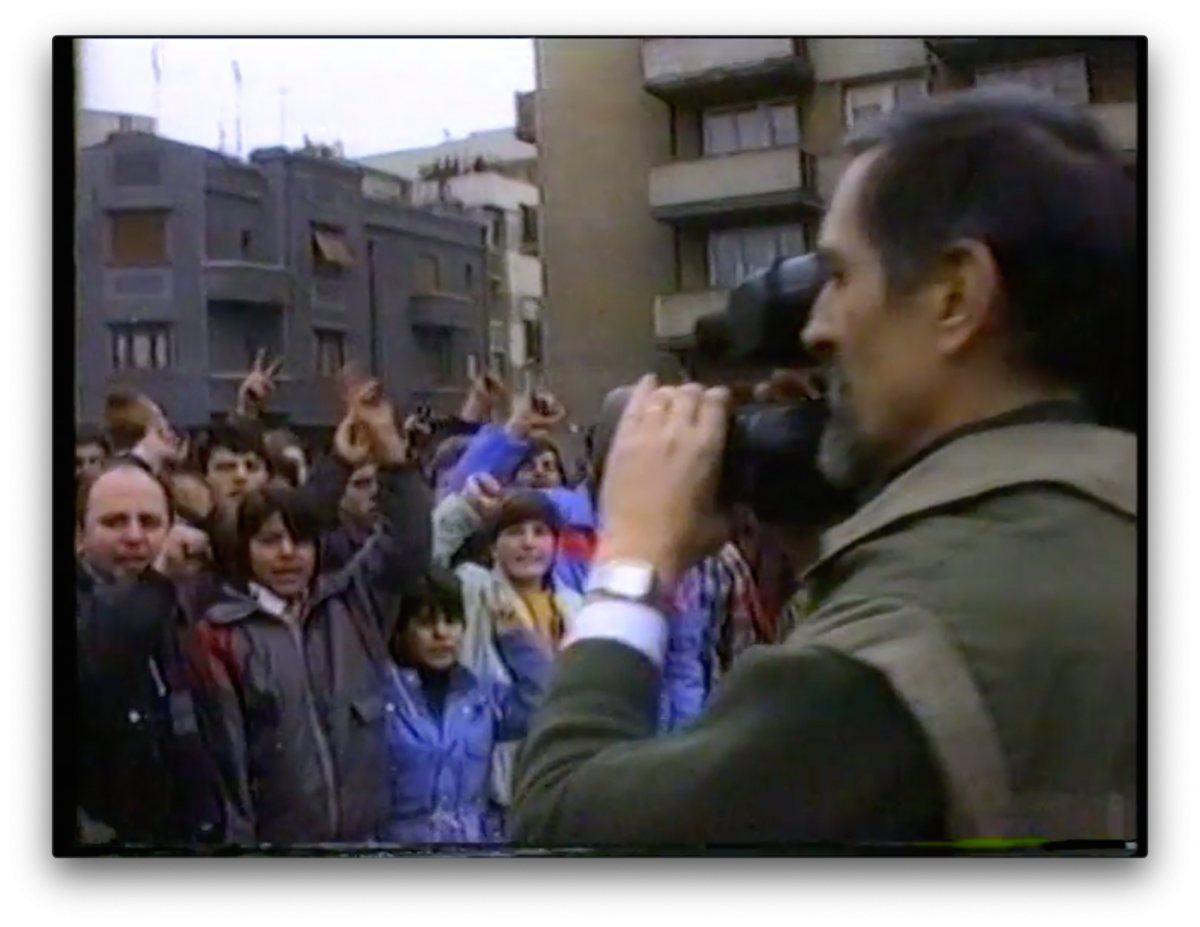
Harun Farocki, Videogramme einer Revolution, 1992. Film still
EJ: Technology and media catalyse and activate imagination. So then talking about dreams, are they real or not? If a video is constructed consciously, perhaps a dream is a refined and fully realised expression of imagination?
ML: A dream is a videogram! A video doesn’t have to be constructed consciously, for example, you could throw your phone and it records a moving image – you’ve taken no part in that. In Marian Blatt and Eduard Williams’s film “Parsi”, a 360 degree camera functions as a pendulum, a human appears only episodically, yet it is not its operator. Images create themselves independently.
EJ: Contemplating the excess of images in today’s artistic practices, one inevitably comes to a conclusion that a contemporary human’s insatiable hunger for representing makes the world a never ending and constantly happening image-of-all, which is mediated in, and for, itself. This process isn’t really thought of over any real distance since we are drowning in the constant stream of creating and consuming visual content – in the end we mediate ourselves in the realm of the imaginary. What does this overflow of images in a human’s consciousness, and within one’s saturated experiences, mean to you?
MJ: One of the main aspects of the festival is answering how our environment, our history as well as the perception of our individual and collective memory is made up of images. The film programme was based on the notion of video-imagination too. We are all interested in how things we see shape our memory, how we remember things in relation to how we experience the sight of them. When photography and video media were invented, the whole understanding of history changed profoundly. The last century has seen a sharp increase in the amount of visual content our consciousnesses intake “Videograms” clearly reflects on that.
VŠ: In my opinion, by choosing “Videograms” as the name for this festival we wanted to point out that, according to us, images don’t simply represent but also create reality. In a way, we are inviting you to reconsider the fact that images are not merely a “reflection” of things or a bringing forth of something invisible to the daylight (however, they do that), but also architectural tools for creating those social situations – through the camera or the power of a person behind it, through the outspread of those images in public space. That’s exactly what Harun Farocki talks about in his and Andrej Ujica’s film “Videograms of Revolution” (it was shown during the “Videograms” exhibition at the Kaunas Artists’ House), so there’s no wonder the festival title was borrowed from their film. In my view, the majority of other films from the curated programme also talk about how video-images shape our way of seeing, our gaze. From a cinema theory perspective, this might seem somewhat commonsensical, yet I think the chosen films focus on the particular points at which this gaze commences. For instance, Barbara Marcel’s film “Open Forest” talks about our relation to the forest, about how a learned look towards it from the perspective of a conqueror eventually – once we get back “on the ground” – leaves us helpless.
EJ: Image content indeed works as a constant stream of represented things. However, an image is never finite. It is seen, experienced, perceived in real time or later inscribed in each of our consciousnesses. So then perhaps we could say an autonomous personal consciousness functions as a green screen?
MJ: I agree. I used to think we needed to imagine our lives as if they were movies, and so make certain decisions in accordance with them being good plot twists. Don’t we often think “this feels like a movie”? That – when you can imagine yourself in a cinematic realm – is a truly strong case for video-imagination. Even walking around Kaunas you catch yourself thinking: “what a cinematographic view… oh, it’s the blue hour”. You start unconsciously using cinema’s terminology. The sun has just set, the “magic hour” has started – time to “do the movie”. Sometimes when your mind starts capturing reality you end up location scouting.
EJ: To make fiction reality – the whole point of it is to do the opposite, and yet fictitious things seem to be taking over. Where is the line between fiction and reality? In those films that capture a spectrum of daily human experience, how is the balance between faithfulness to documentary filmmaking and construction of screen-bound worlds kept? If we are making a movie about autonomous societies, can we objectively portray the socio-cultural reality of that group without penetrating into or controlling their daily life? How does one keep an objective distance between the becoming of existence and its very representation?
ML: To capture the coexistence of different visions would be a dream of mine. I am thinking about Ukrainian director Tatyana Kononenko and Matilda Mester’s film “Budinok” which presents documented daily life at Derzhprom, the former palace of industry in Kharkiv today. A colossal example of Soviet constructivism, the building embodies one of the main avant-garde ideas of the 20th century – it is full of people, lives, epochs, ever-changing geopolitical systems and frozen realities.
VŠ: I think the aim towards objectivity can at times be dangerous, and I agree with my colleague – the coexistence of different viewpoints and imaginations is extremely relevant. Personally, I am intrigued by those works which “throw away” that need for objectivity altogether. Only then is it possible to follow the authors and their self-reflections through until the end of a film, and analyse how images interpose and subjectively participate within that becoming of reality.
For instance, during the “Videogram Days” we presented Swedish collective “Noncitizen” – they create films or moving image projects which investigate human rights, as well as the question of who, let’s say, has the right to create films about the Syrian war; who gets to tell the stories about migrants’ experiences? The Swedish collective tries to involve and prompt people who’ve been refugees themselves to generate images and talk about their experiences, without using the cliché of a privileged director who “gives voice” to someone else. But the important thing is – who will have the power to see that; does seeing it change anything at all; and, generally speaking, how can images interfere with the human reality?
MJ: Collective “Forensic Architecture” gathers filmed material from public surveillance cameras and (re)constructs a single event from a number of different possible perspectives. Each and every direction from which an event is observed form a truly specific viewpoint. However, if you collect visual information from all around, perhaps you can reconstruct a more objective case of what has happened?
VŠ: Talking about objectivity, “Forensic Architecture” is an extremely interesting initiative – they collect as much data as possible in order to discover (un)intentionally hidden connections between certain events or actions, and then they recreate the situation in question. Their research has a legal basis, one could even say that it suggests an objective evaluation of that particular situation, nonetheless, in my opinion, what’s important is that by using visual means to recreate past narratives, they denaturalise the very status-quo “objectivity” of some historical events, thus providing a counter-narrative to the official versions.

Phil Collins, Tomorrow Is Always Too Long, 2014. Film still
EJ: According to Hans Belting, memory is both an archive of observed images and the act of remembering them. Therefore, memory is happening perpetually. What do you think is the relation between memory and imagination? Perhaps imagination borrows from memory what’s been seen and reshapes it into a new medium which itself emerges to the surface as a different form of representation within cinema or another visual art. How does contemporary cinema strengthen the viewer’s experience?
MJ: The connection is bilateral. Video technologies replicate the human gaze, as if trying to convey the very act of looking – as though you yourself are participating in that historical action. Humans have always wanted to capture reality. A 360 degree camera in the film “Parsi” helps solve this problem of limitations – technically, you can see all around. While other films imitate human blinking which strengthen the illusion that the viewer is looking through the eyes of the director or cameraperson. Such image presentation structures are even more immersive. If you eliminate sight, the experience can be altered through other senses, for example, listening makes you focus on the environment even more.
EJ: Some of the films have been created by contemporary artists who only partly work within cinema. Has this been influenced by your own wide-ranging knowledge within the field of contemporary visual arts? How does this interdisciplinary integration change the festival’s identity? Or maybe contemporaneity has witnessed such a reign of hybridisation that there is no need to distinguish between fields or separate genres?
ML: Very early on, as we were just starting to work on “Videograms”, Viktorija and I decided to have an artists’ film programme. We are both curators working in the field of contemporary art. So this seemed natural and relevant. Nonetheless, today the programme consists of a wide variety of creators from different fields, not only contemporary art. We didn’t want to point to even more differences between cinema and contemporary art or moving image – rather, we wanted to “massage” this space and create room for new conversations.
In my personal opinion, when elements of the visual world coexist, there is no need for any kind of strict categorisation. That kind of structure is no longer required. I think, the more things are intertwined, the more significations come to be. “Videograms” act as a means to write history through the video medium. The term stems from a Greek word meaning “inscription” – an image is also inscribed into materials physically or technologically, hence, for the festival’s exhibition its architect Vladas Suncovas designed TV tables of the 20th century, inspired by a medieval typographic font. Interestingly enough, a two-dimensional font became a spatial language for the whole exhibition. There’s another thing that surprises me: physically, videos refer to the last hundred years of our history. The light, the materials, the particles – all physical video images started in the last century. However, today the “matter” of video itself occupies a greater part of our very perception.
EJ: At its core, writing is a visual structure, it objectifies its content; meanwhile, an image-image has many more paths of interpretation (the same can be said about visual hieroglyphs, when a notation system suggests more links between the represented things and the additional, contextual meaning). To what degree is an image objective in conveying its own message? Or perhaps it never even aims at that?
VŠ: Personally, I think all images are subjective and can be used as tools for power mechanisms, even if they aren’t generated by humans but by algorithms, machines or satellites. The observer or the creator of the images also has the power to affect the ones being observed.
MJ: Power is at the hands of those who decide which images to show – someone chooses what we receive.
EJ: Considering the linearity of time, it’s become obvious that at present, chronological sequences have lost their prominence. The multiplicity of media has lead to a fragmented understanding of reality – with a press of a single button you can find yourself in a different time and space. Cinema or video art has always had a causal relation to the past – images are captured, set up, edited in a particular time and space, but watched in a completely different one. How does one capture a fluid and unstable sense of time-space?
MJ: Perhaps our perception of time has been changing because video medium came into existence, and it allowed us to narrate history in a significantly shorter amount of time compared to what it takes in reality. The emergence of the Internet has reduced this distance as well as the ability to focus even more. All media tend to adapt to that, that is, they simultaneously form and adapt within it. In Video-imagination we’ve discussed whether images influence us more than we influence them; how it all gets entangled; our own relation to technology. The act of looking positions you at the place of a camera, but there is also an angle from which you look at a screen. The time is felt differently. It seems the pandemic has brought us a new understanding of time.
EJ: Evidently, when we consider time, we cannot suppose any real beginning and ending of the present. As soon as you think of a current moment, it’s already gone, it’s become an ephemeral continuously passing register of now. Cinema has a tendency to grasp the modality of time, to hold up the present. However, as you are watching it in a different context, it exits and travels beyond the “presentness” which, well, cannot be defined by duration.
I express my gratitude to the curators for sharing their insights.
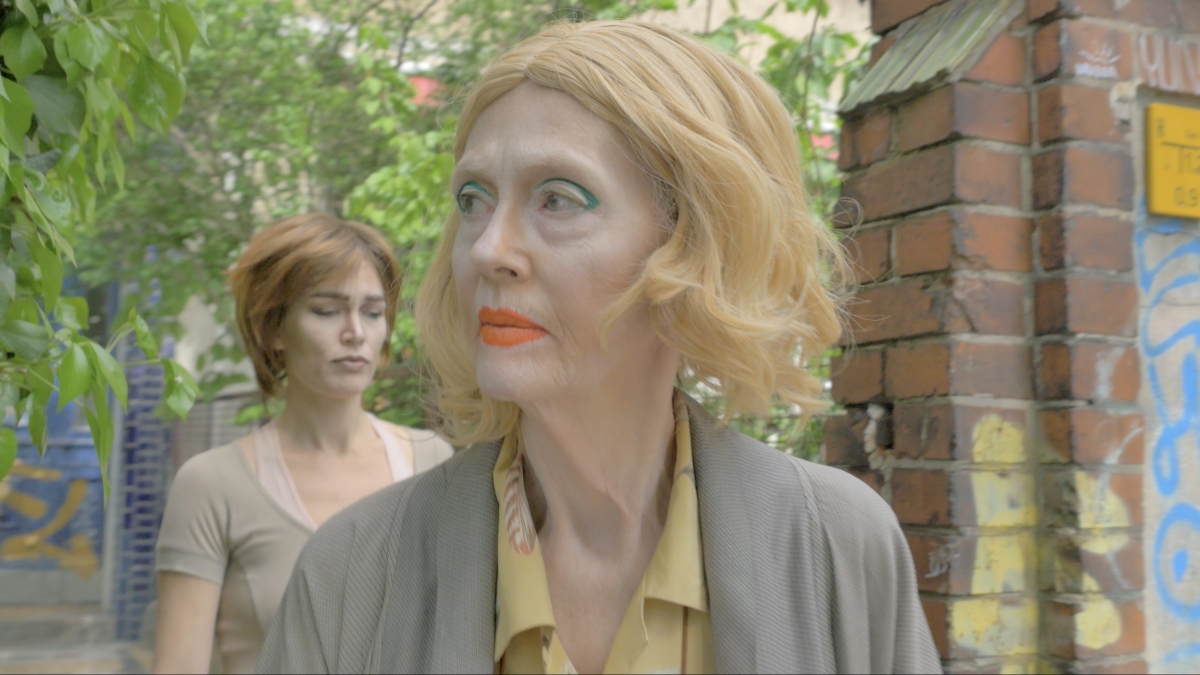
Åsa Cederqvist, Mama Dada Gaga, 2019. Film still

Ingo Niermann, Alexa Karolinski, Ocean of Love, 2020. Film still

